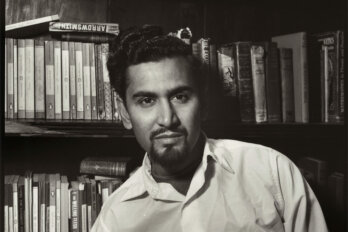When my daughter was two years old, I fished out Madeline and the Gypsies from a pile of childhood books that my mother had saved. I immediately remembered the vibrant illustrations and my fascination with the 1959 story of the boarding-school girl and her friend Pepito who get left at the circus and are adopted by a “Gypsy Mama.” However, as a mother, I now turned the pages, feeling uneasy: the word gypsy is today widely understood to be an ethnic slur referring to the Roma. On top of that, the storyline implies the “Gypsy Mama” is a kidnapper. She rescues the children but then sews them up in a lion costume to prevent them from returning home. What to do? I didn’t want to read it to my daughter, and I didn’t feel right adding it to the donation pile. So I threw it away.
I admit, it felt a little wrong. In fact, it seemed too close to the kind of reaction I’d be quick to condemn—like banning books about transgender kids or accusing the Harry Potter series of promoting Satanism. While Madeline and the Gypsies is the only book I’ve outright tossed, I’ve since quietly censored several others. After our kids enjoyed a highly abridged early reader version of Disney’s Peter Pan, we tried reading the 1911 novel and found blatantly racist descriptions of “redskins”—which I skipped over. Same went for the use of “cannibals” to describe Indigenous characters in Pippi Longstocking, the “eyes at a slant” Asian characters of Dr. Seuss, and the “London street Arabs” and “German Jew” in Anne of Green Gables.
It’s one thing for me, an adult, to encounter these words, archaic and problematic as they are, understand their origins, and keep reading. But I’m not sure if my kids, aged six and three, are even old enough to grasp the concept of historical context, especially as explained to them by an unprepared, exhausted parent. I’m often reading at bedtime, trying to wind everyone down, and it doesn’t feel like the time or the place to launch into a discussion about institutionalized racism or the problem with gender stereotypes. But it also feels lazy and dishonest to just breeze by it or bowdlerize the text into something more appropriate. And now that my eldest is learning to read, I risk getting caught in the act.
I remember, as an undergraduate student, reading Plato’s argument in The Republic for the strict supervision of the production of stories intended for children. We must, he wrote, “choose only those we think suitable, and reject the rest.” This edict seemed outrageously overbearing to me at the time. Now that I am a parent, however, I have to admit that I find myself very much wanting to reject stories that clash with the values I’m trying to teach my children. But is censorship the answer?
When I began researching this question, I wondered if other parents also worried about the language in their kids’ books. I turned to my Facebook friends, and to my surprise, dozens of moms, dads and elementary school teachers chimed in with their own examples of minor censorship and revisions while reading aloud. This included everything from swapping out insults like “dumb” and “stupid” to switching gender pronouns to leaving out racist stereotypes.
My friend Kevin Ammerman, the father of two boys, aged five and ten, in suburban Montreal said he stopped once his kids started learning to read. “I’d rather read the book as written, pausing to call out issues as they arise, than make it look like I’m hiding something.” Jessica Greenberg, a mother of two school-aged daughters in Toronto said she still changes words sometimes but has also started just avoiding certain books, like Laura Ingalls Wilder’s Little House on the Prairie series, which she adored as a child but which include racist descriptions of Indigenous and Black characters. “I couldn’t keep up with my own censoring,” says Greenberg, who finally had to ask herself, “Why am I even reading this in the first place?”
Peggy Albers, a professor of language and literacy education at Georgia State University, says it’s entirely appropriate for parents to stop and consider whether a book is worth introducing to their children. Many parents look forward to revisiting stories they loved as kids; there’s a particular kind of nostalgic delight that comes with cracking open a classic. But Albers says parents also need to think carefully about how a child’s values, attitudes, and beliefs will be shaped by classic stories that include outdated language and stereotypes. “There are just so many other good stories out there now,” says Albers. “If your kids grow up not knowing Pippi Longstocking, do you think they’ll be harmed by it?”
The effect, she explains, is cumulative. “One story won’t change a child’s perspective, but through multiple stories read over time, children develop beliefs about who they are and their position in the world,” says Albers. Her own research has found that exposure to traditional fairy tales, especially those told through picture books, may reinforce gender stereotypes. In other words, archaic ideas and values in classic books don’t go unnoticed by children. The stories we choose to tell matter.
In Canada, the Book and Periodical Council’s freedom of expression committee maintains a list of books that have been challenged (instances where citizens sought to have books pulled from libraries, bookstores, or school reading lists). I called up Michelle Arbuckle, the co-chair of that committee and a director at the Ontario Library Association. I confessed to her my tossing of the Madeline book. “I’ll get flack for saying this as a librarian,” Arbuckle said. “But I’m all for throwing books in the garbage. I absolve you.”
Arbuckle reminded me that, as a parent, I’m not the national archives, and it’s fine to make personal decisions about what books are acceptable in my home. “That’s your prerogative as a parent,” she said. “You live in downtown Toronto—you don’t have room to collect all the thoughts of the world.” Arbuckle told me the best thing I could do to balance out getting rid of one book was to bring in a current book on a similar topic. In this case, maybe a contemporary children’s book about the Roma. “Throw out a racist, garbage book, bring in a book that is inclusive—that’s the best approach. Think of it as replacing a book,” she told me.
This seems logical enough, obvious even. But what about when there just isn’t a counterpoint to the “garbage book” available? For some parents, it is hard to find books that are great stories and engaging for kids and that also reflect their family’s values and realities. A friend, Cecilia Sparrow, whose son went to preschool with my daughter is a mother of two. She identifies as a queer, butch woman, and is married to a woman. Sparrow’s sons call her wife Mommy and they refer to her as Mapa. “I’ve never come across a Mapa book,” says Sparrow. So, when her kids were younger (they’re now six and ten), she would sometimes change “Mom” or “Dad” in the stories to “Mapa.”
Now that her kids can read, it’s hard to get away with changing things, so Sparrow has mainly resorted to calling out problematic language or themes as they come up. “I insert my own commentary, asking lots of questions, like, ‘Why wouldn’t she just wear comfortable shoes instead of glass shoes?’ And the kids find it pretty hilarious sometimes,” she says. Sparrow grew up in a conservative Pentecostal Christian home and remembers sneaking books forbidden at home from the local library and hiding them under her pillow. She says she never wants to make any books off limits to her kids, even ones that clash with their family values. When extended family members first read Christian picture books to her kids, she had this “little knee-jerk reaction” of wanting to say no. But now she just tells her sons, “We don’t believe this, but these stories might help you understand more about people who do.”
Arbuckle agrees that one of the benefits of reading books that clash with our values is to model critical-analysis skills to our kids. “Critical inquiry is so important, but you have to know the time to do it,” says Arbuckle. She says timing is important both in terms of when the child seems developmentally able to understand difficult concepts and what time of day it is. She suggests saving the more challenging books for a time other than bedtime. My friend Lea Zeltserman, a mother of two, learned this last lesson the hard way. “I never want to sanitize things or feel like I’m lying to my kids by pretending the world is all fine and nice,” says Zeltserman. “But I recently made the mistake of letting my eldest read a Holocaust book before bed, and two hours later, she was still in my room crying.”
It can be tough to gauge what kids can understand at various ages. But Albers emphasizes that parents usually underestimate what kids can handle. “I don’t believe in the concept of ‘age appropriate,’” says Albers. “They can read novels at grade four, they just won’t pick up on everything.”
Sarah Fletcher, a mom of two who is a friend of a friend, told me about a smart thing she does to introduce the concept of “historical context” to her five-year-old son. About a year ago, when he showed an interest in numbers, they started playing a game where they’d look in the front of the book to see when it was published. “Sometimes we find out a book is older than Grandma and Grandpa!” says Fletcher. “It became a good way to start to talk about the way things change over time and to introduce him to this idea that people used to think differently.”
Fletcher says that deciding how to deal with the casual sexism and racism that sometimes crops up in classic children’s books has forced her to think hard about her own values and what she wants to pass on to her kids. “I don’t think I would have thought consciously about it as much if I didn’t have kids,” she says.
When I consider the values I hope to pass on to my own kids, I think of how I want them to understand that freedom of expression is important but so is our duty to reject expressions of racism, sexism, and hate. I’m not about to take a page out of the anti–Harry Potter crusaders playbook and mount a campaign to ban all books that don’t fit our family’s values, but I’m, frankly, fine with taking some classics out of rotation in our home, at least for now.
When considering which books from my childhood I still want to share with my daughter, I’ve realized that the hardest ones to let go of are those featuring strong female characters—books like Little House on the Prairie, Madeline, and Pippi Longstocking. This seems true for many of the mothers I spoke to as well. There is, thankfully, a growing canon of children’s literature that showcases free-spirited, headstrong girls (my daughter was one of three Hermione Grangers in her class last Halloween), but it is still much easier to find boy-driven adventure stories.
One of the classics I’ve decided to keep reading is Anne of Green Gables. Does my daughter need Anne when she has Hermione and other, contemporary, strong female characters? Maybe not, but I wanted to give her Anne. Since I’ve now decided to stop skipping words or subbing in less-offensive language as I read, there is some explaining to do regarding Marilla’s casual racism and the rigidity of gender roles in early twentieth-century Prince Edward Island. But I love hearing my daughter’s mischievous giggle when Anne stands up to Mrs. Rachel Lynde, seeing her delight in Anne’s accomplishments, and watching her learn about friendship and loyalty from Anne’s relationship with her “bosom friend” Diana.
The experience of reading Anne together makes me think of a moment when my daughter was around two and still trying to figure out how this whole getting-older thing worked. We were in the bath together, and we were talking about how one day she would be a big kid and then one day she would be a grownup, which means we would be grownups at the same time. She thought for a bit and then asked, “Will we ever be little girls at the same time, Mommy?” When I explained to her that no, time only goes one way, and we’ll never get to be little girls together, she started to cry. And I did too.
But now, a few years later, I’ve realized I was wrong. Sometimes, when we’re lying side by side reading Anne of Green Gables, getting lost in Anne’s “depths of despair” in the fields of PEI, we get to be, for a moment, little girls together.






